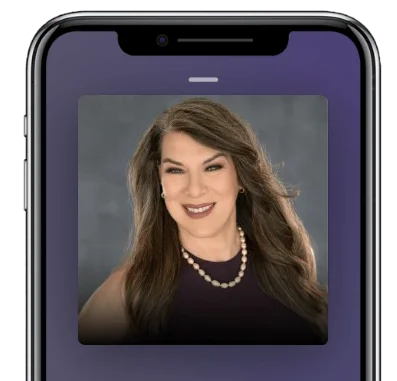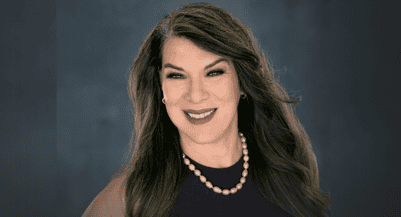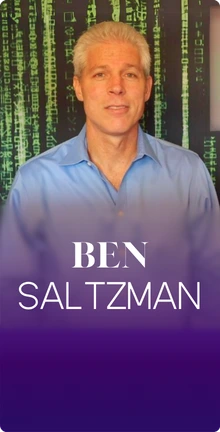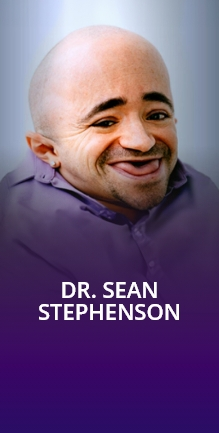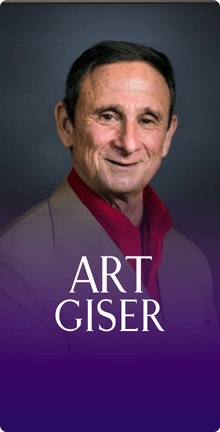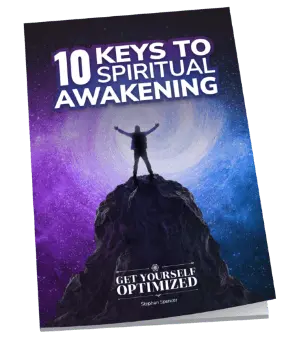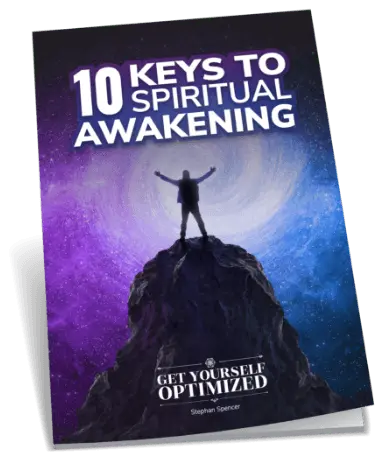In This Episode
- [04:21]Natasha shares her origin story. Then, she explains how embracing the spiral dynamics approach can transform the world.
- [10:35]Natasha discusses the origins of the spiral dynamics approach.
- [19:20]How to break out of the duality of good and bad people.
- [29:41]Natasha explains Plato’s cave allegory.
- [34:59]How to become more relational to others.
- [38:03]What are the practical ways to do today to improve relatability?
- [42:28]How to reach beyond typologies, especially understanding others’ perspectives, intent, and emotional state.
- [48:20]Natasha emphasizes how spiral dynamics change our perspective, even how we listen to music.
Natasha, it’s so great to have you on the show.
Stephan, it is awesome to be with you. How are you doing today?
I’m doing fabulous, and I am just so grateful to have you on the show and my listeners and YouTube subscribers. It’s all blessings.
It’s awesome to be here. What are we going to tackle today?
I would love for our listeners to understand Spiral Dynamics’ origin story. Before we get into that and then, of course, your origin story as well, I just want to give a little shout-out to the Spiral Dynamics methodology because I first got exposed to it through Tony Robbins and attending events like Unleash the Power Within and Date With Destiny, where not only did I have an explanation of it given, but I had some real-world exercises that helped us understand the implications of how we’re wired, how we think, and what our values are. It was eye-opening and very helpful.
I remember Tony having these different people and different hats of different colors, which match the Spiral Dynamics, different colors of green, yellow, red, orange, blue, and all that and what that means. I loved it. It always stuck with me.
When we met through a mastermind that was both in Joint Venture Mastermind (JVMM), I was like, “I know I’ve got to have her on my show.” Thank you for being here. Do you want to share your origin story and the origin of Spiral Dynamics?
It’s a treat and delight, so thank you for having me. I love your interest and your enthusiasm. This truly is an approach that, when you embrace it, can transform the way you see the entire world.
In order to abandon preconceived notions of others, you need to know who you are and be comfortable with yourself. Share on XSometimes when I’ve begun Spiral Dynamics certification training, I tell people it’s a light-hearted joke. Did you read the fine print? They’re looking, and I said, “Yeah, the fine print says you will never see the world the same way again. You’ll never listen to music the same way again. You will never read the newspaper or listen to what’s happening in the world in the same way again. Are you ready for this?” It changes how you see the world, yourself, and the interactions within the world.
I first came upon this approach, not as spiral dynamics but more as values in Neuro-Linguistic Programming (NLP). I did a lot of NLP training. This was presented as “values.” I completed my MBA and was like, “There was that value thing I did an NLP. Let me revisit it.” By the time I’d revisited it, this book had come out, and the book was Spiral Dynamics. I picked it up, started reading, and said, “That is nothing like what I learned.”
I must pursue this more deeply because I was looking at organizational change. Everything I read to me did not make sense. It casually made sense, but it didn’t make sense when it came to human change, both at an individual level, group systems level, and an organizational level, because it didn’t seem to touch what was transforming.
I read the book and told myself, “I need to take this course.” I went to Texas. I drove and took my 140-pound Russian Wolfhound with me. When we got to the Stockyards Hotel in Fort Worth, Texas, it was an evening session to kick off the certification.
I told the presenter, “I have a dog.” He said, “Oh, bring your dog.” This is amazing. That happened to be Chris Cowan.
He wrote 90% of the book, and most people don’t know that. He was one of those people who was open-hearted, generous, kind, and had a heart of gold. Because he was partners with his co-author, put him on the cover and put him as the first author because he didn’t need to be the “first author.” That gives you a sense of his kindness, generosity, and full-heartedness.
The Spiral Dynamics is the world’s most amazing Rorschach test because people see in it what they want to see.
A very little-known fact. I normally don’t do this, but before I went to Texas, I checked my horoscope for some reason. The horoscope said, “You’re going to meet your life partner.” Then I got to the room, looked around, and went, “Yeah, no, they’re not going to be here.” Then I set off, did the work, and brought my dog in daily. It’s fun.
During that program, Chris and I deeply connected, and I was invited to become part of the organization. That started a story of going to fifteen different countries on five continents. We traveled nearly two million flyer miles and delivered certification worldwide to thousands of people as they sought to understand human nature, change, differences, and use of the Spiral Dynamics assessments. So that’s how all of that kicked off.
That’s amazing. I love that story and how the horoscope predicted you’d meet him. It’s cool.
Those things are never right.
Except when it matters. It reminds me of how Marcus Gillette met his wife, Sheila Gillette. Sheila was a famous psychic who got Esther Hicks to start channeling Abraham. Sheila’s been doing this for 50 years.
It was in the 80s. He was a big fan of Sheila and read her book, The 5th Dimension. I’ve interviewed Sheila previously, but I’ll be interviewing both because they’re co-authors of this book, The Art of Relationship. I’ll make sure they tell the story about how they met beyond any coincidence, not random chance. It’s a rigged game that we’re playing. It was so cool how they met and instantly knew they were destined for each other. The writing was on the metaphysical wall. It’s super cool.
You asked about the origins of the approach, which is relevant because people misinterpret this work and project a lot into it. The spiral is the world’s most amazing Rorschach test because people see in it what they want to see. That begins with a professor at Schenectady Union College. Because it was the war years, he saw his professors come in and out. Because his professors were being drafted, they were just pouring their hearts out. They didn’t know if they’d ever come back.
The Rogerians would pour their heart out about Carl Rogers’ work. The Freudians would pour their hearts out about Freud, and the Skinnerians with Skinner. When he started teaching, he did something similar to what he’d experienced. He teaches Freud, Rogers, Skinner, Maslow, and all these guys. Then, at the end of the semester, his students would say, “Well, but Dr. Graves, which one is right?”
At the time, there were numerous debates amongst psychologists about maturity because what the psychologists believed was if we could define maturity, then what we would be able to do is we would be able to grow mature people and train mature people. We’d have mature societies. If we had mature societies, we’d no longer have war.
Some psychologists believe that if we can define maturity, we’ll be able to grow and train mature people and have mature societies where we’ll no longer have war.
He set out with his students, who were his guinea pigs, to have them define what maturity was. It was not like our world today. We didn’t have the internet, and we didn’t have anything. He told his students, don’t read anything but just write what they believe maturity is.
At the end of each semester, he would collect these, and then he’d get a group of what he called judges. He’d put them in a room. They had no idea what he was doing, and he didn’t either, at the outset, but their task was to take these conceptions of maturity and to make an order for them to find patterns. Finally, they had to come to a consensus about what they saw as patterns.
Inevitably, semester after semester after semester, he’d do this. Because he had some of these students over many years, he saw them change and grow. In the patterning, the judges found that they do these piles, this pile of people, and then this next pile of people, and this next pile of people. In his classes, Clare Graves would divide his students according to the piles and set them to do certain tasks.
From that, he’d observe. How did they organize? How did they work with one another? How did they set up the way they worked? How effective were they in the way they worked? From that, he also did a battery of other psychological tests. So those piles became these very clear ‘clusters’ or ‘categories’ of these human systems that you have learned through the colors.
Chris created the colors themselves. He and Graves would spend weekends together. He uses Graves Farm a lot. All of the Graves material was entrusted to us. Back to where the colors come from and what’s all the origin piece, in those ten years between 1976-1986 when Chris and Clare were working together, exploring, Chris would take him out to do lectures, and he’d visit the farm, there’s a lot of back and forth, Chris had these title slides. He’d build the content for Clare Graves. He kept dropping the title slides, all black and white, and he said there had to be a better way.

He took a paintbrush. I think he said it was a Grumbacher number eight paintbrush. He just got the set of colors and said, “All right, I’ll paint this. The first one will be beige for the beginnings of our society, for the Savanna grasslands, for survival in the African grasslands, and then purple.”
For him, the metaphor for purple was the first dye of royals created from bugs. The next one was red, that fiery, expressive, the ego for the first time emerging. The next one was blue, sky blue, heaven, and all is right in the world metaphor. The next one was orange for the industrial age and the fires of the furnaces.
Rigidity starts at the beginning of our spiral and loosens incrementally over these multiple systems.
The next one was green as he was painting these little slides. That was inspired by the book, The Greening of America and more of that green movement. Yellow for solar and that newer technology that was emerging, that was more environmentally conscious. Finally, turquoise because the astronaut saw this beautiful turquoise ball from the moon.
He sarcastically summed it tongue in cheek, and then what they saw under the oceans would be the corals. He just painted it so then when the slides fell; he could put them back in order easily and quickly. That’s how the Spiral Dynamics trade dress, logo, and name emerged because it’s a spiral for human nature and dynamics for how we grow and change.
You can say that person is blue when somebody looks very didactic and rules-based, highly predictable in their behaviors, and very rigid because of their belief systems.
I’ll elaborate on that because one of the things that people conflate in this approach is a couple of brain dominance characteristics. We have people who can be very linear, sequential, process driven, and incremental in their thinking and still be processing in more orange ways or greenways. Rigidity starts at the beginning of our spiral and loosens incrementally over these multiple systems. You’re on target with the rigidity, but it’s not fixed to a system. You see the loosening over time.
Typologies are awesome because they help us see personality in more nuanced ways.
Somebody who’s red, which is earlier on in the spiral, they’re very egocentric and can be prone to blowing up and getting angry or whatever.
That is all personality based. That’s another misunderstanding.
It’s good that we’re talking about this to clear that up.
The colors became these simple ways of getting people at just that very basic, this popular level. Chris said, “If we can get people to break out of, there are good people, and there are bad people, and we’re the good people, and they’re the bad people, to at least start thinking outside of that duality to more kinds of people and what makes them different, then we’ve had a win.”
With so many people have come to Spiral Dynamics, we need to break people out of thinking about it as a typology. There are a lot of typologies. Typologies are awesome because they help us see personality in more nuanced ways. Understanding personality, the Myers-Briggs and the DISC, we have become very sophisticated as a society regarding our ability to embrace differences in this way. That typological thinking is also carried into Spiral Dynamics.
When people come into a program, we introduce them to this. Now we have to do a different thing, which is to change and transform the mindset of this typological thought because when we see another human being, we have a cognitive bias. Within a 10th of a second, we immediately decide, is that person attractive? Is that person trustworthy? Is that person competent? Some of them, we’ve got a taste in terms of attractiveness. But some of it, we have no business deciding, but that’s how our brains are built, and that’s where our typological thinking comes from.
We have to transform our mindset because we have cognitive biases. Once we get into that shift, we can understand the relationship systems more deeply.
Once we get into that shift in our thinking, we can understand these systems more deeply. These are relationship systems. The terminology that we use is dominated by. Most of my advanced students don’t even use colors. The colors are handy for getting that foothold on this slippery mountain of understanding human nature.
Back to red. If we are looking at someone who’s dominated by P-coping, the thinking that matches C-world. We have to have C-world with P-coping. When those come together, then we can say we have red. C-world is unpredictable. It’s often dominated by might makes right. You must cope with this world because you don’t know what happens next.
Imagine there are a lot of shows now about the Vikings, how they’d come in, conquer, enslave people, and all of that. How would you survive if you lived in that kind of world? What do you have to think? How do you need to behave? How do you need to shift to live successfully in that world?
In that world, P-thinking would match, which means you have to be stronger, which means you have to be instinctively driven. You have to have certain prowess. That’s the age when humans created farming and dominated the planet. It’s an angry person. Anger happens in all our systems because it’s part of humaneness. It tells us when our boundaries have been violated.
We can’t just say red is angry because all the systems do anger. What do we think about anger? How do we process anger? How do we behave when anger happens?
With our red, it is a system that doesn’t have a sense of the future. If you don’t have a sense of the future, and you don’t have restraint, and you have an angry person, that will express differently than if you have no sense of the future. You don’t have restraint, and you happen to be a kind and loving person. This red world, red system, red relating, and red worldview can still dominate both. I hope that’s helpful and interesting.
That’s great. That clarifies it because what I remember now from the Tony Robbins event, where he had these people put on different hats and take on the worldview of that system represented by the hat color, the person with the red baseball cap would have to argue their point in a red way. I thought this was about them being hot-headed, quick to anger, etc. But no, it’s about having a worldview that there are no consequences for one’s actions.
There are no consequences, not because they’re saying, “I don’t want to look at consequences.” There are no consequences because they don’t have the neurology, the processing, and the thinking to see a timeline. I remember having someone on one of our programs who had just fallen behind. A nice guy from a different region of the world. What we sat down to do was to figure out a timeline for how this person was going to catch up.
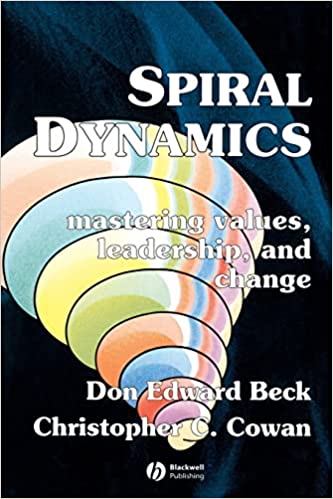
I said, “What are the things that you’re going to do? How are you going to lay them out? What are you going to do first? What are you going to do next?” You put in place your approach and your strategy for catching up. He simply couldn’t do that. He couldn’t put together a project plan.
He approached it with shame that he couldn’t do those pieces. There was no exploding, there was no anger, but that just gives us a different view of what the system is. Because if you have someone who does not work on punishment, does not work on the consequence, or does not see the future, you will have to work with them very differently than somebody who does.
To your other point in terms of worldviews and putting ourselves in them, what we’ve discovered and learned over time is we can teach some of this, but understanding and being able to put yourself in their shoes from their eyes, heart, and wiring is very difficult for probably 90%-some odd of the people. When we have seen how people are “labeled,” probably 99% of the time, the color they pick for what they see is off. That’s because it goes back to our typological thinking.
The beauty of this truth is if we want to see from another’s perspective and worldview to understand their mindset, we need to be able to construct, in a usable way, an understanding of what this actual psychology is. Not what we want it to be, not what we think it is, not what we’d like or dislike, but what it is like to be in that mind, what it is actually to be like in that world and social system, what it is actually like to be confronting the problems of existence that that individual or group are confronting, and then what it is to be in the story that they tell themselves or share as a group or community that creates culture. It’s not as easy as putting on a few hats and going, and this is what I pretend to be.
It’s like you’re trying not just to understand a worldview and a system thinking approach that isn’t yours, that you must almost go back in time or into a previous version of yourself. Maybe that was in that stage of existence to get that worldview. It reminds me of Plato’s cave allegory. Do you know about the cave?
Start thinking outside of your duality, and acknowledge that people are more than just good and bad. We all hold multiple layers. Share on XYeah, I’ve used it exactly like that.
Why don’t you explain it because I’m sure you’ve done it many times than I have? Explain Plato’s cave.
It’s been a while since we’ve been in the cave. We’re looking at the dancing shadows, but we don’t see the dancing shadows and who is making those shadows. Once we’re in the cave, our eyes are accustomed to that dark. Stepping out of the cave is very bright and hard to see in that new world. But it’s also that piece of not seeing the shadows or what creates the shadows because they’re in the dark.

In a sense, we live in our brains when processing from wherever we’re processing. We live in our bodies. We live in our neurology. That’s what we’re used to, and we’re still coming to understand ourselves. It’s hard enough to figure oneself out, to step out of that, and to leave self behind sufficiently to step into another’s world. It isn’t as easy as it sounds.
It’s easy for us to care and empathize when someone has had an experience we can relate to. A friend of mine just told me the story about Thanksgiving, where her sister-in-law came over and said, “How can you not be stressed by all of this?” There were 18 people in the house, and people were all doing their things. The difference was her sister-in-law. When she set out a table for 18 people, all of the cutlery matched, all the silverware matched, and all of the plates matched. It was perfectly set up like a magazine.
It was like grabbing what you wanted in her house, enjoying it, and hanging out where you wanted. We’ve got no set time for everything. “You’re hungry, go eat. The food’s over there. You need that.” People found it comfortable. Very different ways of approaching Thanksgiving dinner.
If we cannot experience the freedom of being non-physical, we will not be able to step into the reality of another’s physicality because the only physicality we know is our own.
One couldn’t understand the other. My friend understood her sister-in-law, but the sister-in-law couldn’t understand her. We have these interesting ways and means of reaching out, maybe touching the shadow, but finding that we’re touching the wall instead of the human we’d like to embody for a time to understand.
The part of Plato’s cave allegory is that the people in the cave are chained to the wall, and they can’t leave. They have no other way to experience the world other than to watch the shadow play against the wall conducted by the people who are casting the shadows. If someone manages to break free, see the world for what it is, and then come back and tell the people who are still chained up, you wouldn’t believe what life is really like. They actually wouldn’t believe it.
I’m blanked on the chaining, you see? I didn’t like that, so I blanked on it.
We are constrained or restricted in some sense in that we are very dense, heavy, material-based humans instead of being—we are energy beings, but that’s not our experience of life. In a way, we are chained to the wall in the cave. We don’t experience what it’s like to be a fifth-dimensional or higher-dimensional being. We get to experience people yelling at us on the freeway because we’re trying to get over, and they’re not letting us. It’s a fascinating world.
Right. If we cannot experience the freedom of being non-physical, how are we even going to step into the reality of another’s physicality that’s not ours when the only physicality we know is our own? That is this work, but I completely forgot about the chaining. I don’t like that.
That is called selective memory. How do you, in your day-to-day life, get more relatable to somebody with a completely different worldview or who has a different system than you? What are you doing daily to stretch outside of your system?
Our selves come with judgment and expectation. You must let yourself go to be fully present with the other person.
It isn’t easy. I recommend doing it when you have the most patient, particularly when it’s a system that you don’t like. I think the first piece is the abandoned self. That takes courage because you have to be comfortable enough with yourself and to know yourself, to be willing to “abandon” yourself. You can’t bring self in because self comes with judgment, and self comes with expectation, but that’s weird. In a sense, you’re letting yourself go to be fully present with this other person.
The other piece of it is what I teach our clients to begin to put together their experience. What does that entail? That entails a historical view of what made them who they are. That entails understanding their beliefs and values. That entails having a solid feel for what their world has been like. That entails being present and listening to the affective, emotional experience of what it’s like being them, of reflecting on who they are to help them articulate more about what’s going on for them.
Much as we have language, we still don’t have great language for some of the things going on within that are more complex feelings, reactions, and interactions within the self as the self interacts with the world and others. We’re also looking at what’s happening in the relating, how people treat them, and how they treat people. Do they see what’s going on? Are they putting stories on it? We’re trying to be fully present to notice how that individual is operating in their world and what their world and that relationship system of which they’re a part is like for them.
What would our listener, who is maybe somewhat familiar with Myers-Briggs, DISC, or one of these other assessments, say about how they put Spiral Dynamics into practice without reading an entire book, taking an entire work, op, or course? What practical things could they do today that would get them more relatability, loving-kindness, and understanding in their interactions with others?
We all experience anger — it’s a part of being human. Helpful anger helps to understand when our personal boundaries are violated. Share on XI think that’s a great question. We use models to help us as a vehicle to guide us through. It’s like we’re riding in Disneyland on one of the trains that take us through—I forget what the things are. Number one, your reality is your reality, and that’s not necessarily someone else’s reality.
You must ask yourself, do you want to understand what’s happening with them? In which case, put yourself aside. But if you’re not ready, be present with the not being ready. Being fully authentic and transparent about this is me. This is who I am, and this is what I need because it takes effort and energy to get into another’s mind-brain world.
The easiest and hardest thing to do simultaneously is to be fully present, listen without putting yourself into the situation, and then reflect on their experiences.
Most of the conversation we have is at a surface level of chit-chat. Very rarely do we have conversations that take us deep into the inner beings of that other person? That takes skill and expertise. The easiest and hardest thing to do simultaneously is to be fully present, listen without putting yourself into the situation, and then reflect on their experiences. If you’ve got it right, they’ll tell you. If you don’t, try again.
From your question, which is more of a practitioner’s question, how do you layer these different tools? It goes back to our earlier conversation that an introvert in red will show up differently than an extrovert in red, but they still have a red world that they need to cope with and red processing that dominates their decision-making. Someone meticulous will show up differently, whether red, orange, green or whatever, than someone who’s just like, just let it go.
In my example of the turkey dinner, one is detailed and meticulous, and everything has to be right. The other one is like, let it go. They can both be red, but they will show up differently. Be cautious about personality and processing from a psychosocial developmental perspective because we are multi-layered, multi-dimensional, complex beings. See others in the same dimensionality you hope they see you with.
It reminds me of a quote that I hear every so often. I think it’s attributed to Eleanor Roosevelt. “Great minds discuss ideas. Average minds discuss events. Small minds discuss people.”
I love that.
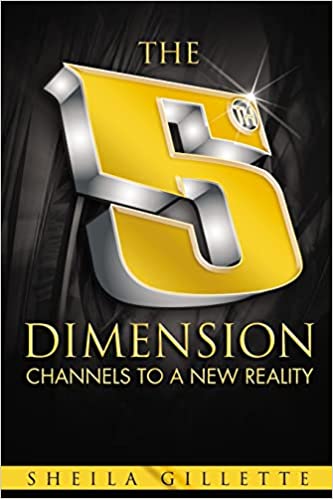
If you want to get into somebody’s world and make them feel understood—because it doesn’t matter, it doesn’t count if you understand them or you get them. It only counts if they feel you when they get by you. I learned that from Ephraim Olschewski. He was a past guest on this episode. I attended his workshop, and that was a profound thing to learn. It doesn’t count unless they feel like it. You understand, and like, “Wow, I get it.” And then they’re like, “No, I don’t feel it.”
And that someone cared enough to put out that effort.
It starts with effort. I think it’s really important to, as you said, connect with yourself and be real with yourself. If you’re not ready to understand that person’s worldview or perspective on things because you’re depleted, you’re still angry about it, or whatever, take a break and get to a place of equilibrium and then try again, rather than trying to push it and lie to yourself, “Oh, I’m going to be fine,” when you’re not. The last person that you want to lie to is yourself.
Do we understand their perspective? Do we understand their intent? Do we understand their emotional state? Are we trying to understand their experience? What is the thing we’re trying to understand? We can do a whole lot in that region and area without ever having to go into the depths of psychosocial development.
For those who are transformationally oriented, for those who have done a lot of the MBTI, the DISC, the Myers-Briggs, the Enneagram and all of that, and who are saying, there’s more, and I want to get beyond the typologies, what does it look like, then you’re taking a journey into the kind of stuff that we do. There’s so much you can do without ever having done all of that. It’s that piece. What are you trying to understand about the other? What is the other trying to express about what they want you to understand?
Is there someone that sticks out in your mind as a public figure who goes beyond the typologies and understands, in this deeper way, what makes people tick?
Not that people would recognize. I wish I could share that.
Who’s somebody that they wouldn’t recognize?
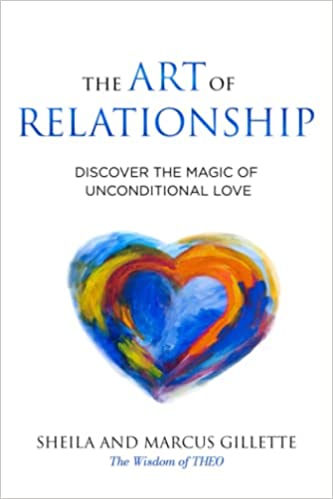
Some of the people that are in our programs are doing coaching or that are working organizationally to help leaders to cohere more effectively with their teams or to get them moving along. We’ve got a few dozen, but it’s not a lot, Stephan. It truly isn’t a lot.
We have a bias. I think. I’m human, and I get other humans. What’s not to get? They like chocolate ice cream, and I like vanilla ice cream. That’s the extent of how we see differences. They’re a quick start, and I’m a fact-finder. We are so much more layered, intricate, and interesting than that. Most of us, not all of us.
There’s got to be an example company that you look at and like, “Okay, these guys get it,” and they’ve implemented it in a way that makes the team or the workforce feel.
We’ve got pockets. One of our clients working with the Dutch police ended up—don’t get the ranks and everything right, so just go with me. I think he was a commander of a unit at a protest in the Netherlands. Rocks were being thrown, and there were sticks, violence, and this and that.
His team was coming up to hold the line. He said to his team, “All right, now what I want you to do is lift your helmets, put your hands out, and introduce yourself to the people in front of you.” That was a moment of courage, vulnerability, and trust because moments before, everyone was lined up, beating each other, shoving, and pushing. They very reticently did what they were ordered to do.
Mind you, and he had done a read of the situation. He understood our approach. He understood who this group was, so he was able to have them take that risk. Immediately, the tensions dropped. They were having conversations with real humans, and the violence stopped.
That’s cool.
If you can accurately figure out what’s happening on the other side, you can make the right call for those in that situation.
I presented to the police officers group here in California at one point, and I shared that story. The way they saw it was they greeted it with revulsion and fear because their reaction immediately was that’s officer endangerment. The point is, if you know, can understand, and can accurately figure out what’s happening on the other side, you can make a call that goes against protocol, instinct, and everything you have learned to be the right call for those people in that situation.
Right, and to do the opposite and just go with your instinct. I’d say your reactiveness or reactivity could have ended in somebody dying.
Which happens, it happens. Let’s do another one for you. A great bunch of people, they’re working with at-risk kids in Australia. These kids were kicked out of every program, and some were kicked out of reform school. Just getting a bunch of stories coming to me. What they did was they put a program together, and they were able to get the kids to differentiate.
For example, we went and visited with them. We did a treasure hunt with the kids. The kids were doing a bit of Spiral Dynamics treasure hunt. They got to a place where the firefighters were spraying water, and they were doing stuff. Some boys were like, “Oh, the fires, and they’re good blue. The coppers, we hate them. They’re bad blue, but the fire is a good blue.” Just that differentiation between who’s showing up and how they are showing up.

These guys would tell the kids, “Look, what your teachers want is for you to sit down, shut up, learn something, take notes, and succeed on the test.” They’re like, “No, those teachers, they hate us, they’re jealous, or they just want to push me down.” They’re like, “No. These teachers want you to sit down, shut up, take notes, and do well in class,” and then eventually, they’re like, “Wait, you mean to tell me all these teachers want for me to sit down, shut up, take notes, and do a good test?” It’s like, “Yeah.” “Oh, we can do that.” It’s the misinterpretation of signaling from another person and what it means to me.
We’re great meaning-makers. We will make all sorts of crazy stuff up from some observation.
Yeah, they’re just out to get me. No, I want you to learn.
If we want to understand others’ perspectives, we need to understand their psychological makeup. Share on XHow does this apply to listening to music? At the beginning of this conversation, you mentioned a couple of things. You’ll never listen to music the same way again. You’ll never read the news again once you’ve taken on this new approach and methodology. How does listening to music change once you understand it?
You’re going to interpret the lyrics differently. You’re going to see different meanings in it. You’re going to hear different things and make obviously different meanings from the sounds, types, and forms of music you listen to.
We don’t have time to go into this, but I’m curious about a 30-second answer. Does your training in NLP change Spiral Dynamics, or are they two completely separate things? Are you weaving these two modalities or methodologies together?
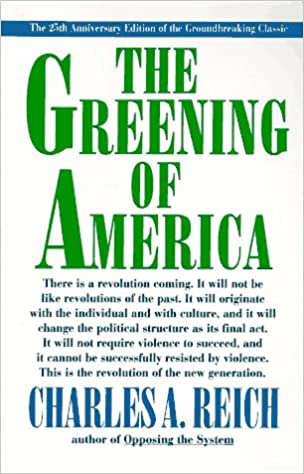
It’s been a very long time since I’ve done my training. I would answer that question in the way I facilitate and train. It’s whatever is stuck, whatever remains. I did an article that I’m happy to share about the principles behind Spiral Dynamics, NLP, and where they come together.
When I work with people, it can’t come in, but it’s been a very long time since I’ve done it. I generally tell people I’m not a coach because I haven’t been trained, although there’s that coaching school where it’s like NLP and coaching combined. But no, when I came to this work, I went to it to learn completely and fully what Chris was doing with it, what Clare Graves was doing with it.
I’ve been accused of being a purist, but one of my earlier careers was fashion. One of my teachers who taught haute couture said, “You need to copy it first. You need to learn the rules. Make sure you know the approaches. When you are well-versed in all the steps, then you can create.”
A similar way of putting it is to adopt before you adapt.
I knew when I came to this work that I needed to embrace it completely and fully for what it was. The innovation comes in is when I’m helping our clients to work with their clients or when I’m designing an approach for our clients rooted in psychosocial developmental systems.
I know we’re out of time. If our listener is interested in getting training, certification, just learning the Spiral Dynamics methodology, or working with your team, where should we send them?
If you’re curious about the Spiral Dynamics journey that is right for you, we’ve got a quiz at the top of our website’s opening page, spiraldynamics.org, spiraldynamics.com, and both. Just take the quiz at the top. It will tell you your next steps and supply you with all kinds of goodies.
All right. Thank you, Natasha. This was fabulous. You’re doing great things to keep Spiral Dynamics out there in the world, improving people’s lives and helping them be more relatable and relate better. Keep up the great work.
Stephan, it’s been a treat, an honor, and a pleasure. Thank you for allowing me to share this amazing stuff with your audience.
Thank you. Thank you, listener. We’ll catch you in the next episode. In the meantime, have a fantastic week. I’m your host, Stephan Spencer, signing off.
Important Links
Connect with Ray Brehm
Apps/Tools
Books
Businesses/Organizations
People
Previous Get Yourself Optimized Episodes
YouTube Videos

